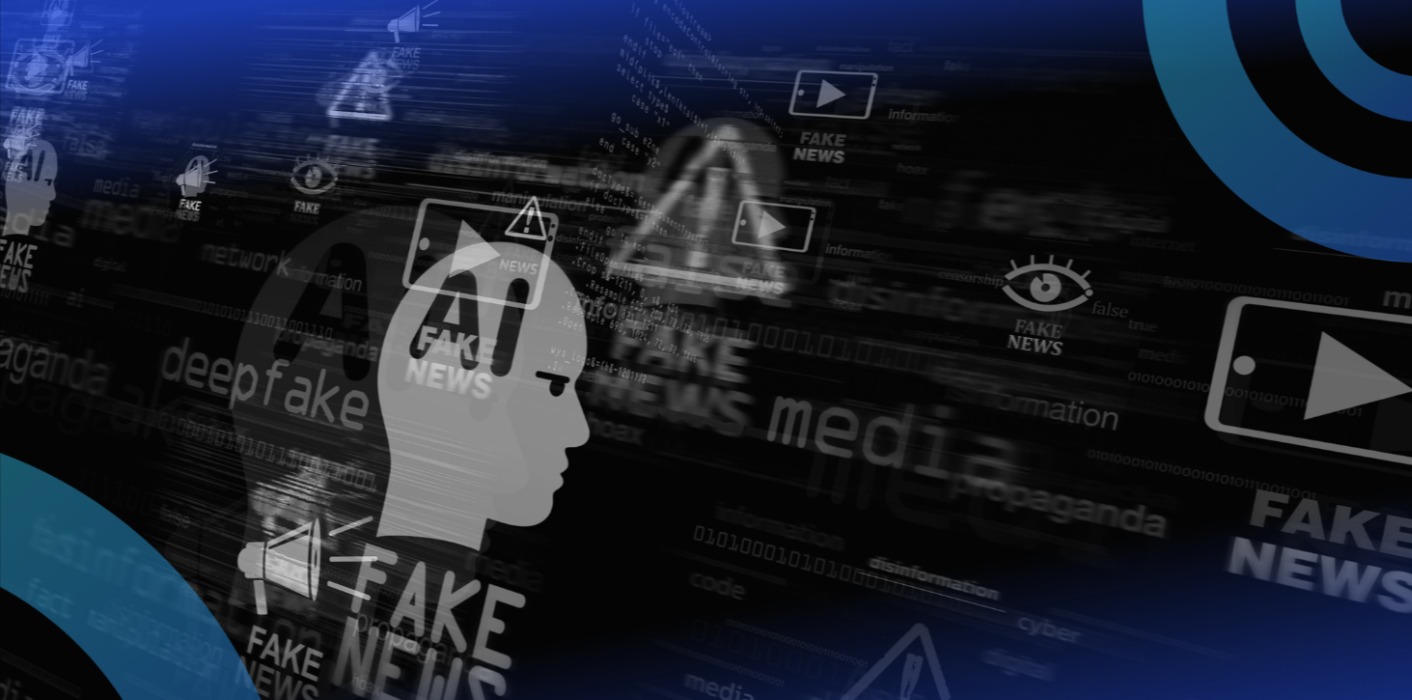
AI in detecting and preventing misinformation: cross-cultural challenges, scaling.
Artificial Intelligence (AI) is revolutionizing the fight against misinformation by analyzing massive amounts of digital content, detecting false narratives, and preventing their spread across social media and online platforms. However, deploying AI globally faces challenges including cultural differences, linguistic diversity, ethical dilemmas, and scalability, requiring hybrid human-AI systems and cross-cultural collaboration for effective, responsible, and inclusive solutions.
✨ Raghav Jain

AI and the Global Battle Against Misinformation (Approx. 1000 words)
In today’s digital era, misinformation spreads faster than truth. With billions of users across social media platforms, online spaces have become breeding grounds for falsehoods, half-truths, and manipulative content. Artificial Intelligence (AI) — through machine learning, natural language processing (NLP), and pattern recognition — is at the forefront of combating this digital epidemic. However, while AI offers powerful tools for detecting and limiting misinformation, scaling these systems across languages, regions, and cultures introduces complex challenges.
At its core, AI-based misinformation detection relies on identifying linguistic patterns, semantic inconsistencies, and source reliability. Machine learning algorithms are trained using vast datasets of verified and false information. These systems can detect cues such as sensationalist phrasing, emotionally charged language, or anomalies in source credibility. AI-driven fact-checking bots, automated content filters, and large-scale social media moderation models have become essential to online information hygiene.
Major platforms like Facebook, X (formerly Twitter), YouTube, and TikTok deploy AI systems that scan millions of posts per second. For instance, Facebook’s “Deep Text” algorithm can understand and classify the meaning of text posts in multiple languages. Google uses AI to downrank misleading or low-quality content in search results. These technologies aim to maintain the integrity of digital ecosystems while preserving user freedom.
Yet, despite the sophistication of AI tools, misinformation remains rampant — especially during sensitive periods such as elections, pandemics, or social movements. The COVID-19 pandemic, for example, exposed the limits of global AI moderation. Misinformation spread in hundreds of local languages, often blending medical advice with cultural beliefs, making it hard for AI to distinguish harmless local narratives from harmful falsehoods.
One of the fundamental reasons is that AI systems are only as effective as the data they are trained on. When these datasets are skewed toward English or Western cultural norms, algorithms struggle to interpret context in non-Western languages or regional dialects. Words that might be innocuous in one culture could be inflammatory in another. This contextual nuance becomes a barrier to accurate AI interpretation.
Take, for example, India — a country with 22 official languages and thousands of dialects. An AI model trained on Hindi or English may misinterpret sarcasm, irony, or political satire in regional languages such as Tamil, Bengali, or Marathi. Similarly, in African nations, where local languages often mix with colonial ones, misinformation detection requires understanding hybridized expressions and cultural idioms. Without localized datasets, AI risks producing false positives — labeling true statements as misinformation — or false negatives, allowing dangerous content to circulate unchecked.
Furthermore, visual misinformation adds another layer of complexity. Deepfakes, AI-generated images, and manipulated videos are increasingly sophisticated. Detecting such content requires multimodal AI systems that can analyze visual, textual, and auditory cues together. Meta, Google, and OpenAI have developed algorithms that identify deepfake patterns based on pixel inconsistencies or generative model signatures. However, deploying such systems globally requires not just computational power but also cultural understanding — a fake video’s impact depends on the audience’s beliefs and societal context.
Another challenge lies in the ethical and political dimensions of AI moderation. In some countries, what is labeled as “misinformation” may overlap with political dissent or satire. This raises questions about free speech, censorship, and algorithmic bias. When governments influence or pressure tech companies to define “truth,” AI systems can inadvertently suppress marginalized voices. For example, during political crises, AI moderation has sometimes flagged critical journalism as “false news” due to keyword similarities with propagandist content.
The scalability issue further complicates things. AI models that work effectively for millions of English-language users may falter when expanded to billions of non-English speakers. Scaling requires enormous computational resources, continuous retraining with local data, and partnerships with regional fact-checkers. The cost and complexity of maintaining multilingual, culturally aware AI systems make it difficult for smaller platforms or developing nations to adopt them effectively.
Despite these challenges, innovations are emerging. Hybrid models — combining AI automation with human oversight — have proven effective. Human fact-checkers verify AI flags, provide cultural insights, and refine datasets for retraining. This approach creates a feedback loop that improves accuracy over time. Additionally, crowdsourced reporting tools allow users to flag misinformation, which AI can then analyze at scale.
Advances in natural language processing (NLP) and multilingual models like Google’s BERT and OpenAI’s GPT family are also bridging linguistic gaps. These models can understand cross-lingual patterns, enabling better contextual analysis across languages. However, they still need fine-tuning for culturally sensitive topics and non-standard speech patterns.
AI-driven network analysis is another powerful method. Instead of focusing only on content, these systems examine how misinformation spreads — tracking shared links, group interactions, and coordinated bot activity. By identifying behavior patterns, AI can detect misinformation campaigns before they go viral. For instance, Twitter’s algorithmic detection of bot networks helped dismantle several disinformation campaigns during elections in multiple countries.
As AI technology evolves, its ability to preemptively predict misinformation trends is also growing. Predictive analytics can identify emerging false narratives by analyzing early online chatter, allowing fact-checkers and governments to act before misinformation peaks. This proactive approach, however, must balance urgency with privacy concerns — since extensive monitoring can raise questions about surveillance and user autonomy.
Ultimately, AI is not a silver bullet against misinformation. It must coexist with human judgment, media literacy, and institutional transparency. Educating users to critically evaluate content, building cross-cultural datasets, and ensuring algorithmic transparency are crucial steps toward sustainable solutions. The future of AI in misinformation detection depends not only on technological progress but also on ethical governance and inclusive global collaboration.
Cross-Cultural Challenges and Scaling AI Solutions (Approx. 1000 words)
Expanding AI misinformation detection across cultures requires navigating linguistic diversity, differing social norms, and uneven access to technology. Each culture perceives truth, authority, and trust differently — factors that directly affect how misinformation spreads and how AI should respond.
1. Linguistic Complexity:
Languages are not merely tools of communication; they carry emotion, history, and identity. Many languages lack robust digital corpora, meaning AI systems struggle to understand them. For instance, indigenous languages, minority dialects, and creoles are vastly underrepresented online. Without sufficient labeled data, algorithms trained primarily on English may misread idioms or metaphors as misinformation. Transliteration — where users mix scripts (like writing Hindi in Roman letters) — adds further difficulty.
2. Cultural Context and Symbolism:
Cultural beliefs deeply shape what people consider plausible or absurd. For example, in some cultures, traditional medicine or folk healing practices are integral to daily life. When AI systems trained on Western medical standards classify such posts as “false,” it can alienate communities and foster distrust. Effective AI moderation must respect local context while still protecting public safety — a delicate balance.
3. Bias in Training Data:
AI models inherit biases from their training data. If datasets reflect political or cultural partiality, AI may reinforce those biases. For instance, Western-centric fact-checking datasets might misclassify non-Western news sources as unreliable simply due to unfamiliar phrasing. To scale effectively, AI systems must be trained on diverse, globally sourced datasets that include local perspectives and independent media outlets.
4. Infrastructure and Access Inequality:
In developing countries, limited internet connectivity, low digital literacy, and minimal regulatory frameworks make scaling AI misinformation systems harder. Moreover, global AI tools may not be optimized for low-bandwidth environments. Building lightweight, decentralized AI systems that can function locally — even offline — is critical for inclusive scalability.
5. Ethical and Political Challenges:
In authoritarian regimes, AI-based misinformation detection can be misused for censorship or political control. Governments may compel platforms to remove opposition content under the pretext of “misinformation.” This misuse undermines trust in AI moderation. Therefore, global standards and independent oversight are necessary to ensure that AI moderation supports freedom of expression and democratic accountability.
6. Data Localization and Privacy:
Different countries have different data protection laws. Scaling AI globally requires adherence to regulations like Europe’s GDPR or India’s Data Protection Act. Balancing data access (needed for training AI) with privacy rights is a constant challenge. A decentralized approach — where AI models are trained locally without transferring raw data — can mitigate some privacy concerns.
7. Collaboration and Transparency:
AI cannot operate in isolation. Partnerships between governments, tech companies, academia, and civil society organizations are essential. Cross-cultural research initiatives can create localized fact-checking databases, linguistic datasets, and ethical guidelines. Transparency in AI operations — such as disclosing how content is flagged — builds user trust.
8. Future Pathways for Scalable Solutions:
To make AI misinformation detection scalable and culturally competent, the following strategies are emerging:
- Multilingual NLP Models: AI systems that natively process multiple languages without translation errors.
- Community-Based Data Training: Collaborating with local journalists and researchers to create culturally relevant datasets.
- Explainable AI: Models that can justify why they flagged certain content, allowing human verification.
- Federated Learning: AI models that learn from decentralized data sources across countries, preserving privacy while improving accuracy.
- Hybrid Human-AI Frameworks: Combining computational efficiency with cultural insight from local moderators.
As AI capabilities continue to expand, the ultimate challenge will be building trust — both in the technology and in the institutions that deploy it. The solution lies in designing systems that are transparent, accountable, inclusive, and adaptable to diverse human realities.
In the digital age, where information travels at the speed of a click, misinformation has become one of the most pervasive threats to democracy, public health, and social harmony — and Artificial Intelligence (AI) stands at the frontlines of this battle. AI systems, empowered by machine learning, deep learning, and natural language processing (NLP), have been designed to detect and counter false information before it spreads. By analyzing linguistic cues, verifying data sources, and identifying emotional manipulation, AI tools attempt to distinguish truth from deception at a massive scale. For instance, social media giants such as Facebook, X (formerly Twitter), and YouTube have integrated AI-driven moderation systems capable of scanning billions of posts daily for potential misinformation indicators like sensational phrasing, conspiracy-linked keywords, or questionable sources. Yet, while these systems excel in English and other dominant global languages, the true challenge arises when AI is expected to function across cultures, where languages, idioms, and belief systems vary profoundly. A phrase that is humorous in one country may be offensive in another; a traditional remedy described online might be legitimate in one culture but flagged as pseudoscience in another by AI trained on Western data. This linguistic and cultural gap exposes a central weakness in global misinformation detection — most AI systems are built and trained on datasets that lack diversity, meaning they often misinterpret or overlook region-specific nuances. Consider, for example, how misinformation about vaccines during the COVID-19 pandemic spread differently in Asia, Africa, and Latin America. In some regions, false claims were embedded in cultural or religious narratives, while in others, they relied on political skepticism. AI, unless trained on contextually relevant datasets, struggles to recognize these subtleties. The complexity multiplies in multilingual nations like India, where a single misinformation narrative can exist in dozens of dialects and writing systems. A phrase written in Romanized Hindi might carry a different tone than the same phrase in Devanagari script, and an AI system not designed to interpret both may flag legitimate information or, worse, allow harmful content to go unchecked. The scalability issue becomes even more pressing when visual misinformation — such as deepfakes, photoshopped images, or AI-generated videos — is introduced. Deepfake technology uses AI to create hyper-realistic yet entirely false visual content, posing an enormous challenge to detection systems. Platforms like Meta and Google now use AI algorithms capable of identifying pixel-level inconsistencies or synthetic image fingerprints, but these methods are computationally intensive and far from foolproof. Compounding the problem, deepfakes often exploit cultural context — a fake video of a local leader making an inflammatory statement can provoke real-world violence before fact-checkers can intervene. Beyond technological hurdles, ethical and political dilemmas further complicate the landscape. In democratic societies, AI moderation must balance combating misinformation with protecting freedom of expression. However, in authoritarian regimes, misinformation detection technologies can be weaponized to suppress dissent under the guise of “content moderation.” This ethical paradox highlights why AI cannot operate without transparency and accountability. Moreover, biases embedded in AI’s training data can lead to disproportionate censorship of marginalized voices or minority languages. Bias often creeps in subtly: if an algorithm is trained mainly on English news from established Western outlets, it might deem alternative or local journalism as “unreliable.” Similarly, satire, irony, or political humor — common cultural expressions — are notoriously difficult for AI to interpret, often resulting in wrongful removals of legitimate content. Despite these limitations, progress continues through hybrid models combining AI precision with human judgment. Human moderators and local fact-checkers provide context that machines lack, refining AI’s understanding through continuous feedback. This human-AI partnership allows systems to adapt better to regional contexts and evolving linguistic trends. For example, during elections in multilingual countries, AI systems have been augmented with real-time data from local fact-checkers to improve accuracy in identifying politically motivated misinformation. Technological advances like multilingual NLP models — such as Google’s BERT or OpenAI’s GPT architectures — are now enabling AI to better understand cross-lingual semantics, bridging some linguistic gaps. However, cultural literacy remains a missing ingredient. Language alone doesn’t convey context; cultural belief systems, humor, and symbolism are equally critical. A scalable AI misinformation system must not only translate words but also interpret meaning, intent, and cultural resonance. Another emerging approach is network-based misinformation detection, where AI analyzes the pattern of information flow rather than the content itself. By studying how misinformation spreads through networks — such as bot clusters or coordinated inauthentic accounts — AI can identify malicious campaigns early. Twitter (X), for example, successfully identified and dismantled several election-related disinformation networks using such behavioral analysis. Yet, scaling these models globally remains resource-intensive, demanding vast computational infrastructure and continuous updates to combat evolving misinformation tactics. Smaller platforms or developing nations often lack the resources to deploy such advanced systems, widening the global inequality in digital truth defense. To bridge this gap, researchers advocate for community-based data collection — where local journalists, academics, and civil society groups contribute culturally relevant datasets for AI training. Such collaborations ensure that AI models reflect diverse perspectives rather than a single cultural lens. However, the process of gathering and annotating this data raises privacy and ethical concerns, particularly in regions with strict data protection laws. Privacy-preserving technologies like federated learning, where AI models learn locally without transferring raw data, offer a promising path forward. Still, implementing them globally requires cooperation between governments, tech companies, and international regulatory bodies. Moreover, AI’s future in misinformation prevention depends heavily on building public trust. Transparency about how algorithms work — what data they rely on, why they flag certain posts — is essential to prevent skepticism and promote responsible usage. Explainable AI (XAI) frameworks are becoming central to this mission, allowing systems to provide clear, human-readable justifications for their decisions. In the long term, AI will not just react to misinformation but predict and preempt it through trend analysis, identifying early signals of emerging false narratives. However, this predictive capability must be balanced carefully against privacy rights to avoid intrusive surveillance. Ultimately, AI’s success in fighting misinformation will depend on more than its algorithms — it will hinge on humanity’s ability to blend technological innovation with cultural empathy, ethical integrity, and collaborative governance. Only through global cooperation, culturally aware design, and transparent implementation can AI truly scale to protect truth across the world’s diverse societies.
In today’s hyperconnected digital world, misinformation has become one of the greatest challenges to public trust, societal stability, and democratic discourse, spreading faster than ever due to the sheer scale and speed of social media platforms, messaging apps, and digital news networks, and in response to this, Artificial Intelligence (AI) has emerged as a critical tool for detecting, analyzing, and preventing the proliferation of false or misleading information, employing advanced techniques such as natural language processing (NLP), machine learning, pattern recognition, and network analysis to identify potentially harmful content before it reaches wide audiences, with algorithms trained on vast datasets of verified information, falsehoods, and previously identified disinformation campaigns to recognize linguistic patterns, semantic inconsistencies, emotional triggers, sensationalist phrasing, and unreliable sources, while AI-driven fact-checking tools and automated moderation systems have become indispensable for major platforms like Facebook, X (formerly Twitter), YouTube, and TikTok, enabling near-real-time scanning of billions of posts and videos, highlighting content that may be misleading, and applying warnings, downranking, or removal protocols to protect users from the spread of dangerous misinformation, yet despite the impressive technical capabilities of these AI systems, they face significant challenges when operating across diverse languages, cultural contexts, and socio-political environments, as the subtleties of meaning, humor, idioms, and culturally specific references often elude models trained predominantly on English-language or Western-centric datasets, making cross-cultural application a major hurdle, and this problem is particularly pronounced in multilingual societies like India, where dozens of regional languages, scripts, and dialects coexist, with online content often transliterated in Roman script, combining local idioms with English phrases, thus confusing AI classifiers and leading to either false positives, where legitimate information is mistakenly flagged as misinformation, or false negatives, where harmful content slips through moderation systems unnoticed, and when it comes to visual misinformation, the challenges multiply, with the rise of deepfakes, AI-generated images, and manipulated videos that can simulate real people saying or doing things they never did, requiring sophisticated multimodal AI models capable of analyzing visual, auditory, and textual signals simultaneously, yet such systems demand immense computational power, constant updating, and access to culturally diverse training datasets to detect manipulation effectively, and even when technical solutions exist, ethical, legal, and political considerations complicate deployment, as what is considered misinformation in one country may be viewed as satire, dissent, or opinion in another, raising concerns about censorship, algorithmic bias, and suppression of free speech, particularly in authoritarian contexts where governments can manipulate AI moderation systems to silence opposition under the guise of combating false information, and furthermore, biases in AI training data itself can exacerbate these challenges, as models built on Western-centric or mainstream media sources often misclassify content from minority groups, independent media, or local traditions as unreliable, underscoring the need for culturally aware, inclusive datasets and ongoing human oversight to correct algorithmic errors, and the COVID-19 pandemic illustrated these challenges vividly, as misinformation about vaccines, treatments, and public health measures spread globally, often intertwining scientific inaccuracies with local cultural beliefs, requiring AI systems not only to process language but also to interpret cultural context to avoid alienating communities or inadvertently amplifying distrust, and while multilingual NLP models such as Google’s BERT, OpenAI’s GPT, and other transformer-based architectures are improving AI’s ability to understand semantics across languages, they still require fine-tuning for local dialects, idioms, and socio-political nuances, highlighting the importance of hybrid approaches where human fact-checkers, journalists, and local moderators complement AI to refine datasets, validate flagged content, and provide culturally sensitive oversight, and beyond text, AI increasingly uses network-based analysis to track how misinformation spreads, studying patterns of sharing, coordinated bot activity, and viral propagation networks, which allows platforms to detect campaigns before they escalate, but scaling these systems globally introduces additional barriers such as unequal access to technology, infrastructure limitations, privacy regulations, and the need for cooperation across governments, companies, and civil society, particularly in regions with limited digital literacy or low-bandwidth connectivity where lightweight, decentralized AI solutions may be necessary, and emerging techniques such as federated learning offer a promising avenue, enabling AI models to learn from distributed, localized data without transferring sensitive user information, thereby respecting privacy laws while improving cross-cultural accuracy, while explainable AI frameworks help users and regulators understand why content is flagged, promoting transparency and trust, which is crucial because AI that operates opaquely risks public backlash or misuse, and as AI systems evolve, predictive analytics are being integrated to anticipate misinformation trends by analyzing early online chatter and identifying potential narratives before they go viral, a proactive approach that requires balancing efficiency, ethical considerations, and user privacy, and the human-AI collaboration remains central to long-term success, as humans provide the nuanced judgment AI alone cannot achieve, ensuring that interventions consider local cultural norms, historical context, and social sensitivities, while also continuously refining models to reduce errors and prevent biases from perpetuating, and international collaboration between tech companies, academic institutions, civil society organizations, and governments is necessary to establish standards, share datasets, and develop tools capable of operating inclusively and ethically worldwide, ultimately, the battle against misinformation is not just a technological one but a socio-cultural and ethical challenge, requiring AI systems that are not only fast, scalable, and intelligent but also adaptable, culturally competent, transparent, and accountable, capable of working alongside humans to preserve truth, trust, and the integrity of public discourse in a world increasingly reliant on digital communication, and by focusing on multilingual capabilities, hybrid human-AI moderation, explainability, network analysis, and privacy-conscious, federated approaches, the global community can leverage AI to mitigate misinformation effectively while respecting the cultural diversity and democratic values of different societies, ensuring that technology empowers rather than suppresses, educates rather than deceives, and ultimately, builds a digital ecosystem where accurate information can thrive across borders, languages, and cultures, while harmful falsehoods are identified, contextualized, and addressed before they escalate into societal harm, which is the ultimate goal of integrating AI into the fight against misinformation at a global scale.
Conclusion
AI has become indispensable in detecting and preventing misinformation, providing scalable tools for real-time monitoring, content filtering, and trend analysis. However, scaling such systems across cultures introduces linguistic, ethical, and infrastructural challenges. No algorithm, however advanced, can fully grasp the depth of human culture or the nuances of local belief systems.
The most promising future lies in hybrid solutions — blending AI efficiency with human contextual understanding. Building global cooperation, creating culturally inclusive datasets, and promoting digital literacy are vital. AI must evolve from being a mere content filter to a culturally intelligent partner in sustaining truth. By prioritizing fairness, transparency, and inclusivity, AI can truly become a global ally against misinformation.
Q&A Section
Q1: How does AI detect misinformation?
Ans: AI uses machine learning and natural language processing to analyze content patterns, check source credibility, detect emotional bias, and flag inconsistencies compared to verified information databases.
Q2: What are the biggest challenges in using AI globally for misinformation detection?
Ans: Linguistic diversity, cultural nuances, biased training data, and ethical concerns about censorship make global AI deployment complex.
Q3: How do deepfakes affect misinformation detection?
Ans: Deepfakes make it harder to identify fake content because they manipulate visuals and audio realistically, requiring advanced multimodal AI to detect them.
Q4: Why is human involvement still necessary?
Ans: Human moderators provide cultural understanding, verify AI results, and prevent algorithmic bias — something machines cannot fully achieve.
Q5: What can improve AI’s performance across cultures?
Ans: Developing localized datasets, multilingual models, and community partnerships ensures AI systems understand cultural and linguistic context accurately.
Similar Articles
Find more relatable content in similar Articles

The Future of Electric Planes ..
The aviation industry is under.. Read More

E-Waste Crisis: The Race to Bu..
The rapid growth of electronic.. Read More

3D-Printed Organs: Are We Clos..
3D-printed organs are at the f.. Read More

Virtual Reality Therapy: Heali..
Virtual Reality Therapy (VRT) .. Read More
Explore Other Categories
Explore many different categories of articles ranging from Gadgets to Security
Smart Devices, Gear & Innovations
Discover in-depth reviews, hands-on experiences, and expert insights on the newest gadgets—from smartphones to smartwatches, headphones, wearables, and everything in between. Stay ahead with the latest in tech gear
Apps That Power Your World
Explore essential mobile and desktop applications across all platforms. From productivity boosters to creative tools, we cover updates, recommendations, and how-tos to make your digital life easier and more efficient.
Tomorrow's Technology, Today's Insights
Dive into the world of emerging technologies, AI breakthroughs, space tech, robotics, and innovations shaping the future. Stay informed on what's next in the evolution of science and technology.
Protecting You in a Digital Age
Learn how to secure your data, protect your privacy, and understand the latest in online threats. We break down complex cybersecurity topics into practical advice for everyday users and professionals alike.
© 2025 Copyrights by rTechnology. All Rights Reserved.